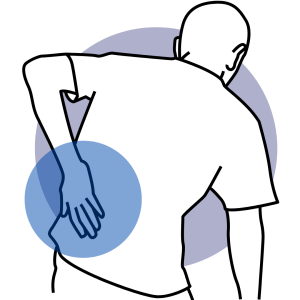
SCOLİOSİS
Scoliosis is an abnormal curvature of the spine to the side. Normally, the spine should be in a straight line, but with scoliosis, the spine may curve to the side. This curvature can often be in the shape of an “S” or “C” and the spine can curve to the right or left. Scoliosis usually occurs in childhood or adolescence, but can also develop in adults.
Causes:
Idiopathic Scoliosis: It is the most common type of scoliosis and the exact cause is unknown. Genetic factors are thought to play a role.
Congenital Scoliosis: It is a congenital condition and is caused by abnormalities in the development of the spine during infancy.
Neuromuscular Scoliosis: Conditions affecting the nervous or muscular system can cause scoliosis by disrupting the balance of the spinal muscles.
Rheumatoid Arthritis and Other Rheumatologic Diseases: Rheumatoid Arthritis and Other Rheumatologic Diseases
Degenerative Scoliosis: It can occur due to degeneration of the spinal discs and joints during the aging process.
Non-Surgical Treatment Methods:
Observation and Monitoring:
In mild cases of scoliosis, the doctor can observe the patient at regular intervals and check whether the spine is progressing.
Physical Therapy and Exercises:
Special exercises and physical therapy can be used to strengthen the spinal muscles and increase flexibility.
Orthosis Use:
To prevent or correct the progression of scoliosis, special corsets or braces recommended by the doctor can be used.
Pain Management:
In case of pain, painkillers and anti-inflammatory drugs can be used.
Surgical Treatment Methods:
Scoliotic Surgery:
Depending on the severity of the scoliosis, surgical intervention may be necessary. In this surgical procedure, metal plates, rods and screws can be used to reduce the degree of curvature of the spine and straighten the spinal segments.
Vertebral Fusion:
It is a surgical procedure in which two vertebrae are joined together to stop the progression of scoliosis and stabilize the spine.
Surgical treatment is usually evaluated depending on the severity of the scoliosis and the patient’s condition. The treatment plan usually involves a multidisciplinary approach and may involve collaboration between an orthopedic surgeon, physiotherapist and other specialists. Treating scoliosis can vary depending on the severity of the condition, the age of the patient and other health factors.




.png)
.png)
.png)